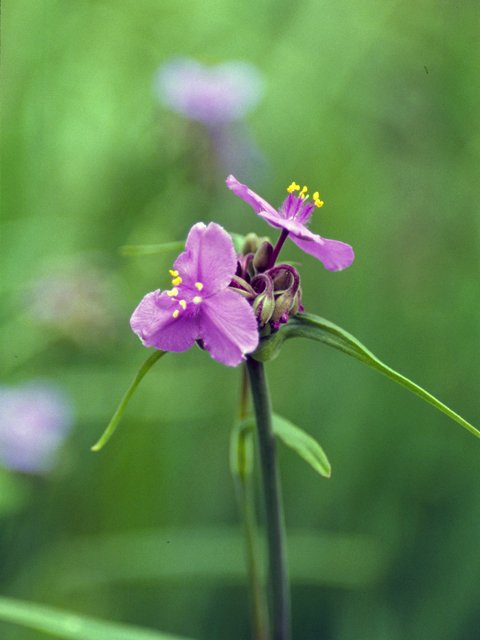Embrace Nature's Artistry with Prairie Spiderwort
Prairie spiderwort at CPC’s Indiangrass Preserve
The Coastal Prairie Conservancy has collaborated with HNPAT and Clark Condon to create the 9 Natives program, which helps to promote the value of native plants for pollinators and makes native gardening more accessible for newcomers. By bringing bits of the prairie into the city, individuals and families can help support pollinators and learn about the historic coastal prairie landscape. The Coastal Prairie Conservancy has produced a video and supporting materials that demonstrate how to create a pollinator garden and how this will make a difference for local wildlife throughout the city.
Whether you have a backyard or live in an apartment or townhouse with limited yard space, the 9 Natives for Sun and 9 Natives for Shade can bring natural beauty to your surroundings without requiring a lot of maintenance. The next feature is the stunning prairie spiderwort (Tradescantia occidentalis), a wildflower that will add a touch of enchantment to your garden!
Prairie spiderwort is an exquisite wildflower with delicate purple-blue petals that form a star-like shape. Its slender, arching stems and elegant blooms create a graceful presence in any garden setting. Native to prairies and open woodlands, this plant brings a touch of the wild to gardens and green spaces in urban areas. Prairie spiderwort thrives in both sun and partial shade, making it a versatile choice for various settings. Aim to provide it with at least 4 to 6 hours of direct sunlight per day, although it can tolerate some shade.
Photo courtesy of Sally and Andy Wasowski (Lady Bird Johnson Wildflower Center)
When selecting a location for this plant, consider areas with well-draining soil. It can adapt to a range of soil types, including sandy or loamy soil. Ensure good drainage to prevent water-logging, as excessive moisture can be detrimental to the plant's health. You can propagate prairie spiderwort through seeds or divisions. If starting from seeds, sow them directly into the soil in spring or fall, following the recommended depth and spacing on the seed packet. Water the seeds gently and keep the soil consistently moist until germination occurs. If opting for divisions, separate clumps of established plants and replant them in well-prepared soil, ensuring they receive adequate moisture during the establishment period.
Prairie spiderwort offers a range of benefits for your garden. Its star-like flowers add an element of grace and natural beauty, becoming a visual highlight in any landscape. The plant's adaptability to varying lighting conditions makes it suitable for spaces with different sun exposure levels. Additionally, the plant’s blooms attract butterflies and bees, enhancing the biodiversity and ecological balance of your garden. With its low maintenance needs, prairie spiderwort requires minimal care, providing long-lasting enjoyment once established.
Fun Fact: The name "spiderwort" comes from the plant's sap, which appears sticky and cobweb-like when it is broken, resembling spider silk.
With its adaptability, low maintenance needs, and wildlife attraction, prairie spiderwort is a perfect choice for prairie lovers and gardeners seeking to create a harmonious blend of nature and artistry. Stay tuned for our next article where we'll introduce black-eyed Susan, another native plant from CPC’s 9 Natives program!


